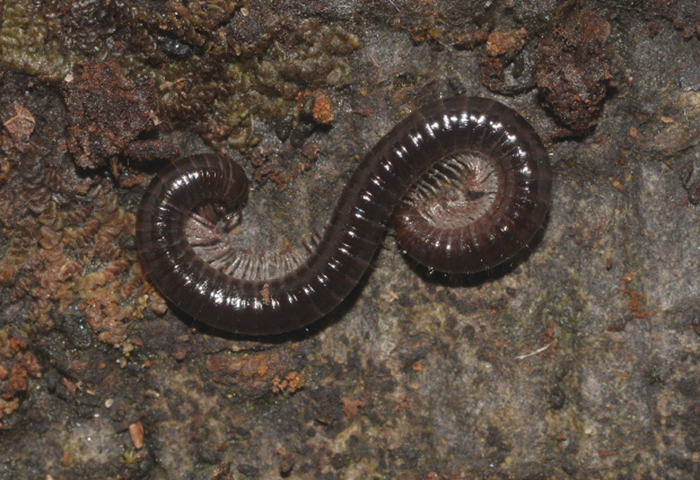Julus scandinavius. Image credit: Joerg Spelda, SNSB Zoologische Staatssammlung Muenchen, 2010 (https://eol.org/pages/314091/media)
Millipedes are a group of widely distributed saprophagous arthropods that consume dead plant litter in temperate and tropical forests. Millipedes are major consumers of fallen leaf litter, and are found abundantly in calcium-rich, moist habitats. Millipedes are important reservoirs of calcium in the soil, as their exoskeleton contains a high amount of this ion. This reflects their importance for calcium cycling. Millipedes can also inhabit arid and semiarid regions, despite their dependence on moisture – in fact, millipedes lack a waxy layer on their epicuticle and are vulnerable to desiccation. Millipedes are characterized by having two pairs of jointed legs on most body segments (hence belonging to the class Diplopoda). Millipedes can be grouped into: 1) tubular/cylindrical, round-backed forms; 2) flat-backed forms; and 3) pill bug types (roll into a ball). Millipedes range widely in length (usually around 5-20 cm).
Did you know? Millipedes (Diplopoda) look somewhat similar but are only distantly related to centipedes (class Chilopoda), which move rapidly, are venomous, carnivorous, and have only a single pair of legs on each body segment. Centipedes are also soil dwellers.

Diversity in soil: 10-2,500 per m2
Abundance in soil: 110 per m2
Classification: Macrofauna